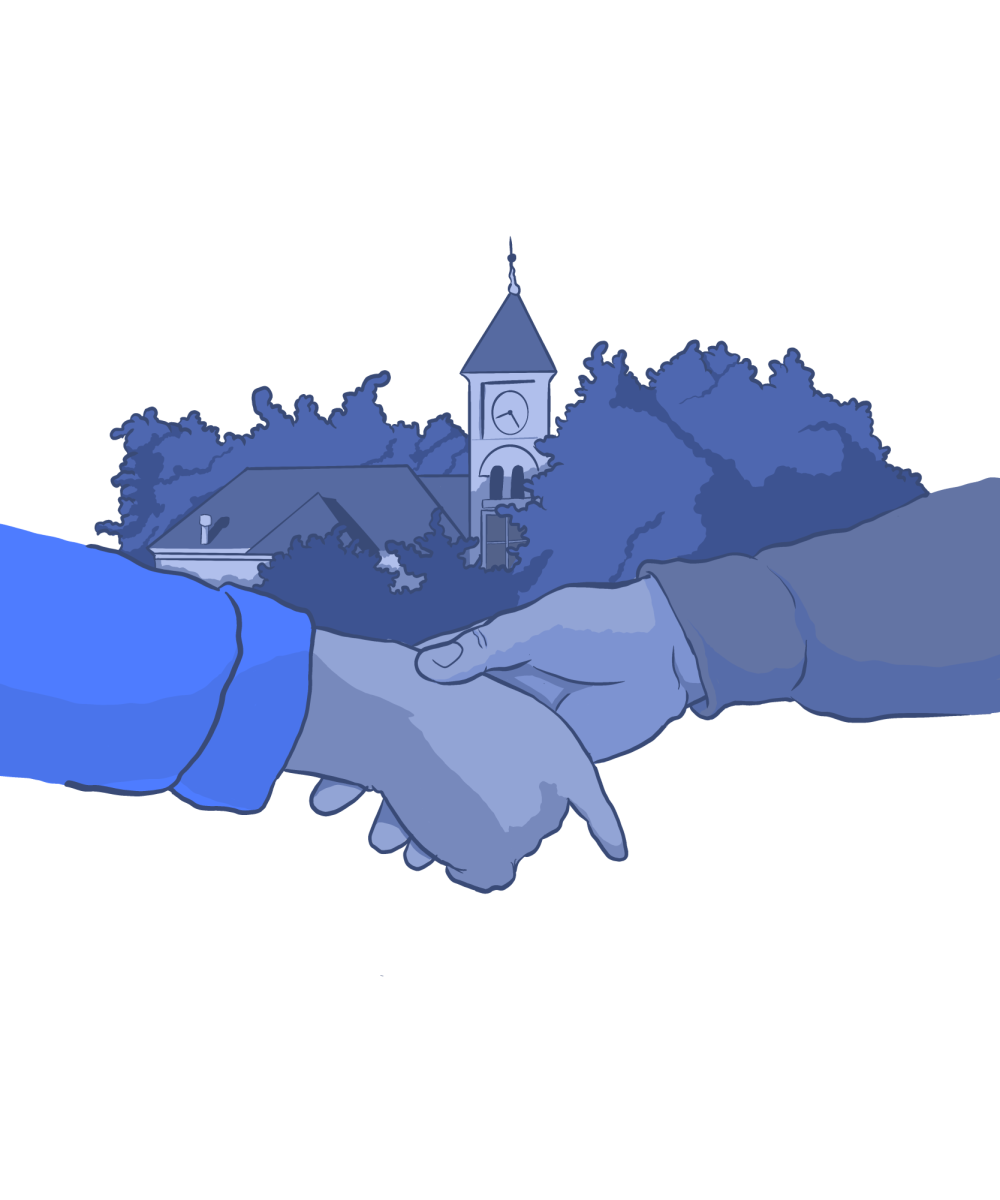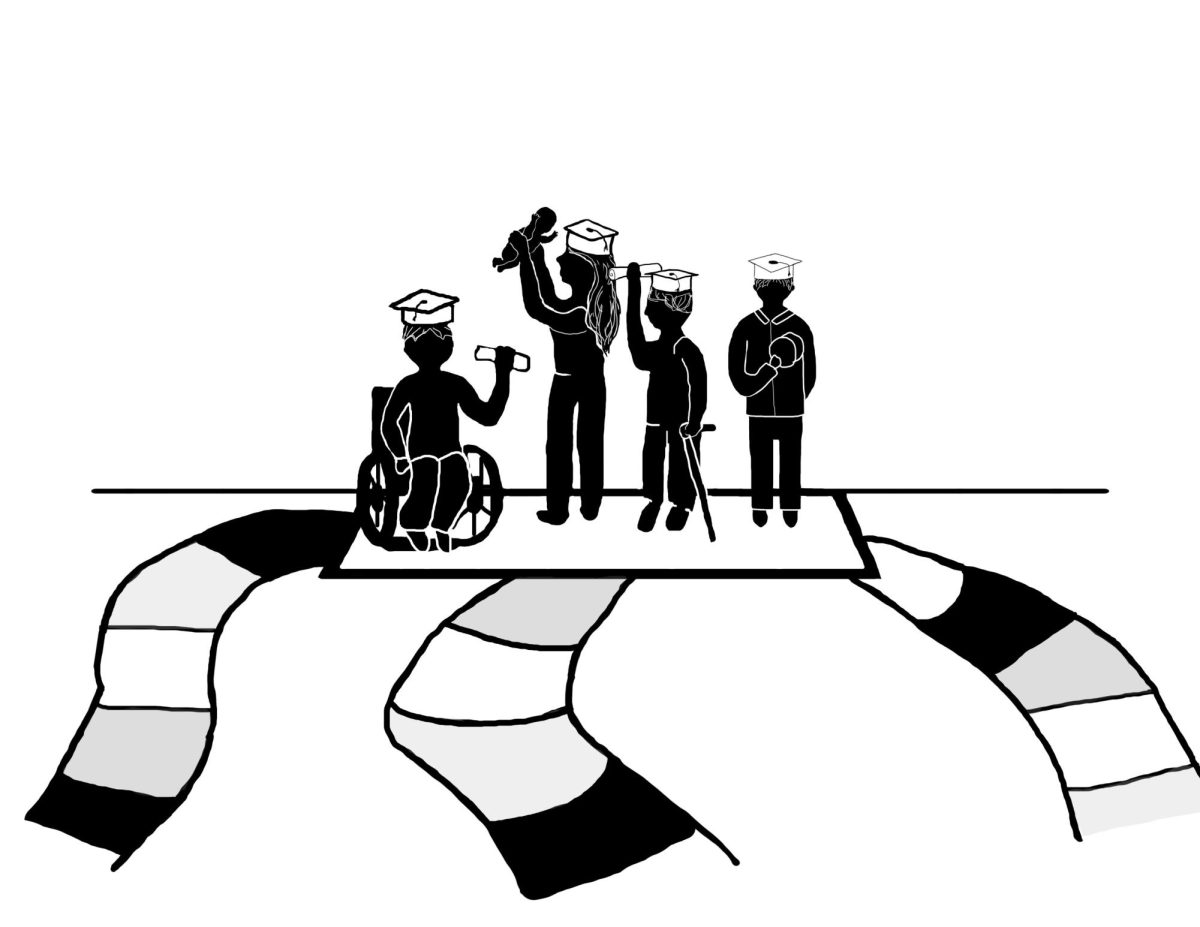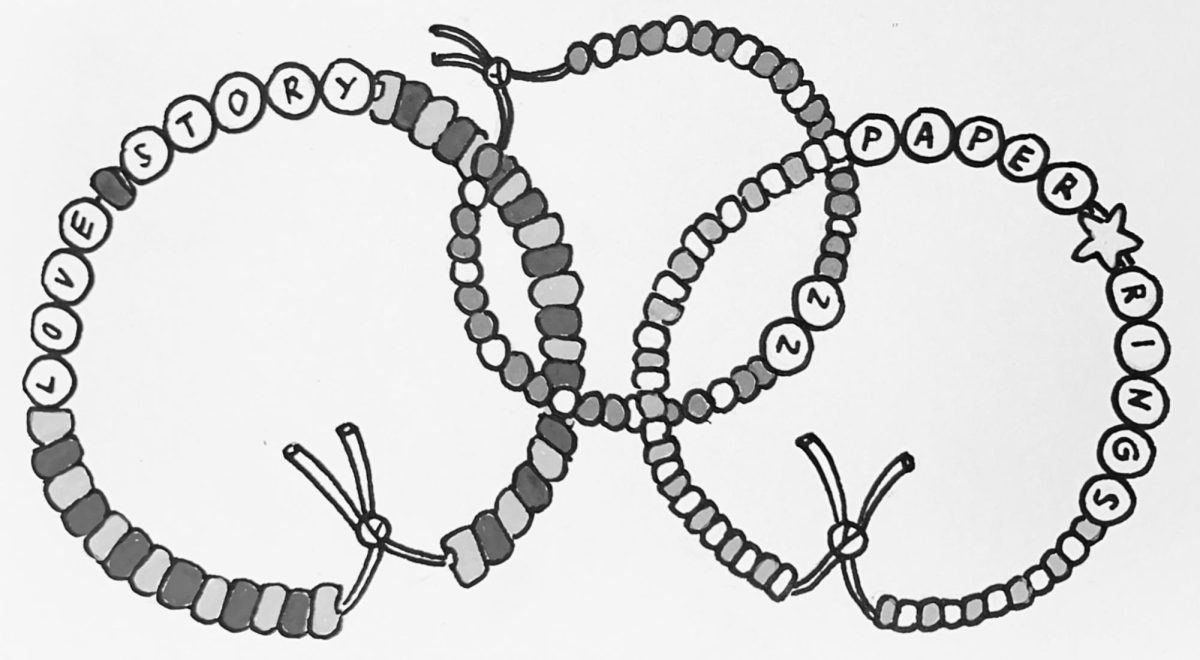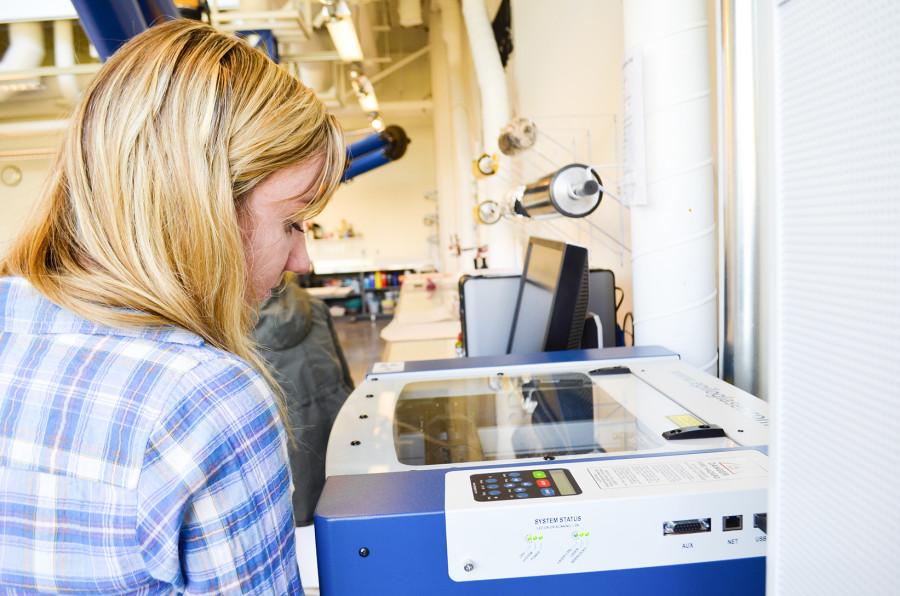Sophomore Sean Terada remembers a sixth grade trip to Mauna Kea on the Big Island of Hawaii. He hiked through the lush emerald growth in the rain forests on the slopes of the mountain, breathing in the humid air. Without warning, he came upon an abrupt cut away where the rainforest stopped and opened out onto dark, jagged lava rock. It was as though this mountain was home to more worlds than one.
“You can feel how special that place is when you are there. There is nowhere like it in the world,” said Terada about the mountain.
Mauna Kea is the tallest mountain in Hawaii, standing 13,796 feet above sea level. Located on the island of Hawaii –– the “Big Island” –– its peaks are shrouded in blankets of snow. First-year Casey Poe recounts a legend where the mountain’s snow is said to be the flowing tresses of the Hawaiian goddess Poli’ahu. The mountain is sacred to Native Hawaiian culture, a protector and source of countless legends and rituals.
Mauna Kea is not only a place with cultural significance, but it is also said to be one of the best places for stargazing and astronomy. First-year Tehani Louis-Perkins, who is from Haleiwa, Hawaii, recalls looking up into a sky studded with stars, unpolluted by the glare from urban lights.
“I remember being on the mountain and being amazed. It’s like you are in another world because above you all the stars are in the sky –– it’s so clear,” said Louis-Perkins.
The mountain is so great for stargazing that 13 telescopes have already been built on its slopes. Another one, named the Thirty Meter Telescope (TMT), is currently proposed. It would be massive, spanning five acres at its base and 18 stories in height. Canada, the United States, India, China and Japan have invested in the building of the telescope, which will be completed in 2024. Astronomers claim that a telescope of this scale on Mauna Kea will allow astronomers to see into the origins of the universe.
But opposition to the TMT – and the environmental destruction it could cause – by Hawaiians and people around the world has mounted significantly since March. Social Media is abuzz with #WeAreMaunaKea and other shows of solidarity. Sleep-ins and human barricades on the mountain have blocked access to the construction site.
The protests are occurring for multiple reasons. Mauna Kea is spiritually significant, with its slopes and summit serving as burial ground. The mountain is also considered to be the meeting place of the Earth and sky deities, and it is said to house a spiritual connection between history, ancestors and present-day occupants of the Hawaiian Islands. In addition, Mauna Kea is home to abundant natural resources, aquifers, a freshwater lake and many endemic species found nowhere else in the world.
While the official website for the TMT claims that the construction will not cause disruption to the environment and natural aquifers, some are still worried. The final Environmental Impact Statement for the TMT”s construction says, “The cumulative impact of past and present actions to geologic resources in the astronomy precinct have been substantial, significant, and adverse primarily due to the reshaping of summit cinder cones … These impacts would continue to be substantial, significant, and adverse with the consideration of the Project [TMT construction].”
The report also states that the TMT will result in further changes in the shape of the mountain’s cinder cones. While the report says there are no significant threats to Mauna Kea’s aquifer and fresh-water lake, many are still concerned.
Protectors, not Protesters
Poe can see three white protrusions on Mauna Kea’s slopes from her home in Hilo, Hawaii. These telescopes are nowhere near as large as the TMT is proposed to be. Poe, a Native Hawaiian, says that her family back home, and many of those standing up against the telescope’s construction, think of themselves not as protestors of the telescope, but as protectors of Mauna Kea.
“My family and friends say we aren’t protesters. We are protectors because [we] are trying to protect what we already have,” said Poe.
Louis-Perkins and Terada, also Native Hawaiians, say that choosing to build a giant telescope on its slopes threatens what Mauna Kea stands for. They also believe it threatens the effort for native Hawaiians to reclaim their culture, traditions and identity.
“It is our home and it is something that we need to protect. We have let everything else in Hawaii get desecrated and destroyed. It’s time to protect what is there and is natural,” said Louis-Perkins.
Hawaii in Context
Hawaii was an independent nation, though it had a dominant English and American presence in the late 1800s. In 1893, Queen Lili’uokalani of Hawaii was forcibly deposed from her throne by the Committee of Safety, a committee formed by English and American businessmen with the goal of overthrowing the queen and annexing the island nation.
That same year when concerns were brought to President Cleveland about the illegal overthrow of the Hawaiian monarchy, Cleveland ordered an investigation. At first the investigation found the overthrow unjust, and Cleveland made a statement implying that injustice had been done to the people of Hawaii.
However, further investigations proceeded and the Morgan Report was released in 1894 stating that claims of Hawaii’s illegal overthrow were unfounded. Under President McKinley in 1898, Hawaii became the 50th state of the U.S by annexation. Some believe the annexation to have been illegal.
Following annexation, Hawaiian language and cultural practices were oppressed by the dominant white minority on the islands so much that there was an imminent threat of the culture dying out. In the 1970s, the Hawaiian Renaissance began. The movement was an effort to rejuvenate the Hawaiian language and culture.
We are Mauna Kea
For Louis-Perkins and Terada, the resistance against the TMT is an extension of the renaissance that began in the 1970s. It is yet another step to reclaiming Hawaiian identity after decades of oppression.
“This would be huge things for Hawaiians to show that we are standing up. We won’t tolerate just being trampled over anymore,” said Terada.
According to Louis-Perkins, part of the resistance to the TMT is to show future generations of native Hawaiians, and other cultures around the world, what it means to take a stance in the realm of cultural integrity.
“Standing up for your culture is standing up for what you believe in and for yourself. You need to stand up for your home. That is basically the main message we’re trying to get across,” she said.
A Clash of Knowledge
Alissa Cordner, assistant professor of sociology at Whitman, sees this movement in parallel with many other movements across the U.S where Native American reservations and historically sacred land are used for resource extraction and industrial development.
Rather than outright resource extraction, though, the controversy of the TMT at Mauna Kea is a sort of skirmish between ways of knowing, with a Eurocentric, scientific view of knowledge prevailing over indigenous knowledge.
“In this case you have a very direct prioritization of the Western scientific model [by] choosing to build another telescope when another way of knowing would say we don’t need another telescope in this location to understand the stars around us,” explained Cordner.
Hawaii’s Polynesian ancestors have a legacy of being navigators and scholars of the sky. Terada described the juxtaposition of modern science and indigenous knowledge.
“Hawaiians have been interested in new technology and new things, but I’m not so sure if far out galaxies is what we [Hawaiian ancestors] are going for,” he said. “We were very much focused on what we could actually see and use in the moment.”
Reflecting on Whitman’s dedication to the sciences and its pursuit of knowledge, Cordner says it is vital for students to consider fundamental questions about the ethical use of the knowledge we gain.
“At what point should we choose to take advantage of every technological opportunity just because we can? At what point do we decide that our need to know more about the universe trumps other people’s needs? Those are just important questions to ask in this academic environment,” she said.
What’s it Worth?
Poe, Terada and Louis-Perkins aren’t against scientific discovery. The implications for environmental degradation and the cultural imperialism symbolized by the proposition and construction of the telescope are just not worth the benefits of building such a massive telescope on this particular spot.
“I’m all for science and the exploration of space … just not on Mauna Kea. Once you totally desecrate a mountain like that, then there is no going back, you can’t rebuild a mountain,” said Poe. “We’ve already lost so much as a Hawaiian nation already. Do we have to lose more?”+















